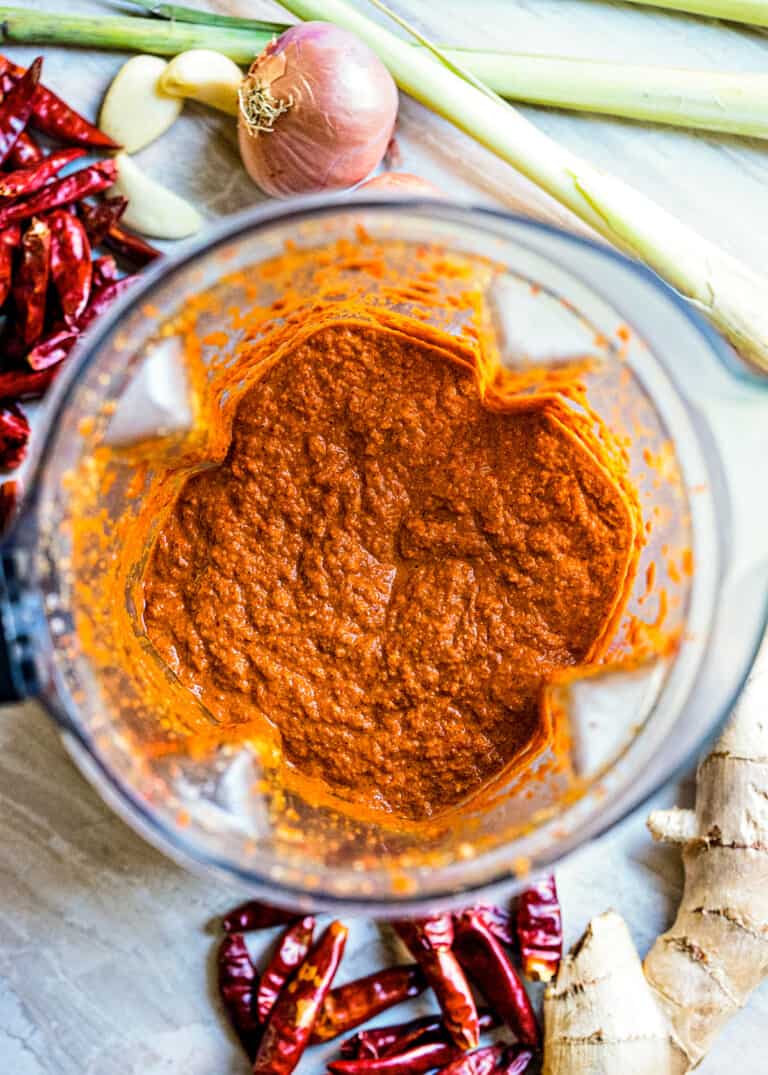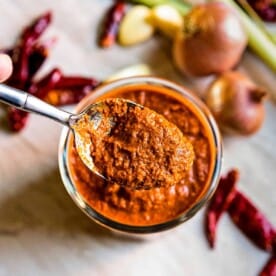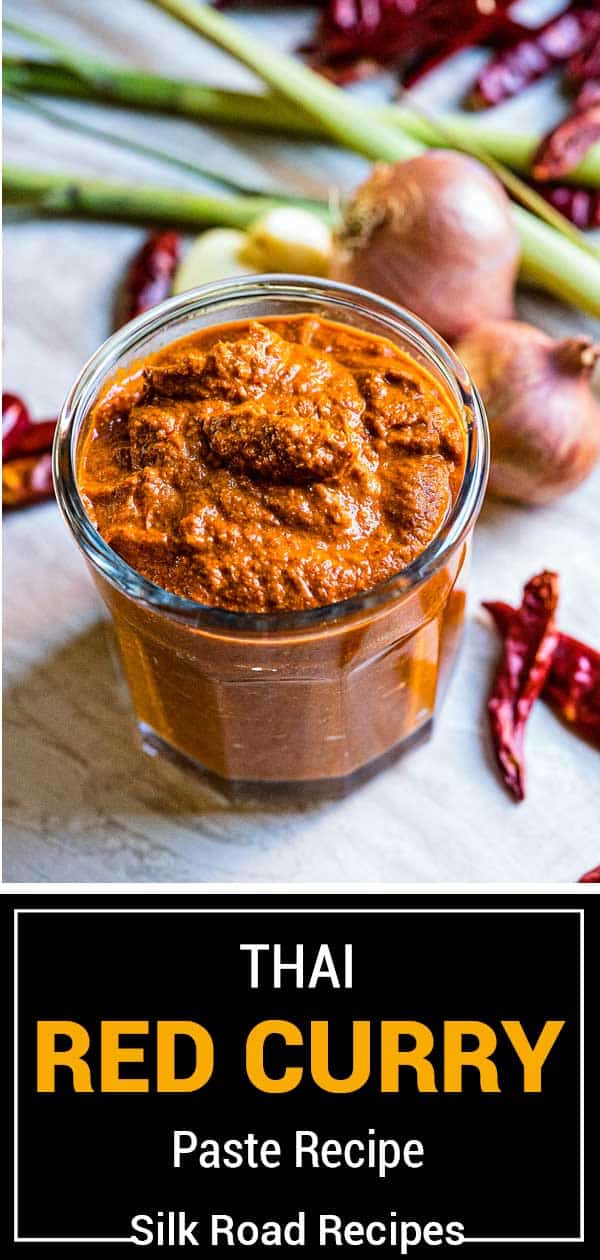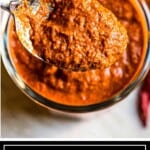published May 16, 2022, updated Sep 23, 2024 Using the right sauce or condiment is the deciding factor of a delicious dish — after all, the devil is in the details! So I’m leaning on Sujet Saenkham’s Thai red curry paste recipe in his Spice I Am to make a red curry paste that hits all the right notes (with a few changes for ingredient accessibility). This complex spice curry paste is hot, salty, lemony, and herbaceous… and better than any jarred stuff you’d find at the store! Plus, you’ll be able to adjust the saltiness and spiciness to match your preferences — or at least those of your least spice-tolerant dinner guest (a yellow curry blend might be your best bet there). I use this in my Red Curry Chicken dish. These common Thai condiments, including panang and green curry pastes, are key to the yummiest, spiciest homemade Thai dishes. The first few that come to mind are grilled curry chicken, yellow shrimp curry, and flaky baked halibut!
Recommended Tools
Food Processor – Or a high-powered blender.
Storing and Freezing
This will keep for up to 5 days in the refrigerator. But if you wanted to make this red curry paste recipe in bulk, you’re in luck! It freezes tremendously well and will keep for up to 2 months in the freezer. Chiles de Arbol found in the Mexican food section of your local market are another good one to use – any small dried red chile will work honestly.
Tien Tsin Chile Peppers – Also known as Chinese Red or Tianjin peppers, these little chiles sure pack a punch. Chiles de Arbol is a Mexican pepper that’s pretty similar in terms of heat, so it makes a good substitute. What’s most important is to use a small, dried pepper, not fresh! Garlic – Start with 4 cloves the first time you make this red curry paste, but feel free to add more the next time you make it if you like a lot of garlic! Lemongrass Stalks – We’re using mostly the white stalk (with a little bit of the green). Shallots – Yellow or sweet onions are the best alternatives. Fresh Ginger – To substitute fresh ginger with ginger paste, use 1 tablespoon per inch (so 6 tablespoons for this red curry paste recipe). Shrimp Paste – Known in Thailand as kapi, this salty, fishy condiment is made from krill that have been fermented for weeks and then ground together into a salty, sticky condiment. It’s key to an authentic Thai red curry paste recipe and can be found in Asian markets! Kaffir Lime Leaves – This Thai lime (it’s really the Thai lime) has super aromatic, citrusy leaves that are used in a variety of Southeast Asian cuisine. Substitute with lime or lemon zest.
To freeze your homemade red curry paste, divide it into an ice cube tray to freeze in cubes (this makes for easier thawing/portioning later on). Once solid, pop them into a plastic bag and scribble the date on the bag. Love this recipe? Share it with the world on Pinterest.








